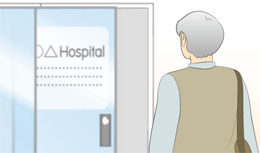There are special clinics in Tokyo.
Please tell your current regular medical institution that you wish to undergo heavy ion radiotherapy, after confirming the cancer diagnosis you have received from that institution. As a general rule, before you can see a doctor in any medical institution that provides heavy ion radiotherapy, you have to obtain a letter of introduction and various materials from the medical institution that has diagnosed you with cancer.
Consultations and explanations regarding heavy ion radiotherapy are provided by the Particle Radiotherapy Clinic. Please consult the Particle Radiotherapy Clinic directly if you are a person from overseas who lives in Japan and are able to communicate in Japanese or English.
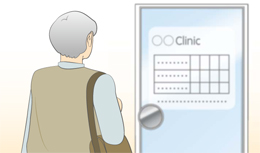

Consult your international medical coordinator.
When a patient from overseas wishes to undergo heavy ion radiotherapy in Japan, we recommend that, before anything else, the patient should consult Medical Excellence JAPAN* so that the necessary procedures can be smoothly carried out before the medical examination. Medical Excellence JAPAN introduces the patient to an international medical coordinator with an extensive track record in matching many patients with medical institutions, and supporting these patients during their stay in Japan. The Inquiries page on the English version of this website is linked to the inquiry form of Medical Excellence JAPAN.
For the flow from an initial inquiry to arrival in Japan, and the services of the international medical coordinator, please see the International medical support page as well.
* Medical Excellence JAPAN is a general incorporated association established with the support of the Ministry of Economy, Trade and Industry (Japan) in 2011. Medical Excellence JAPAN meets various needs of people from overseas who wish to receive medical services in Japan.


Clinical examinations and scans
Each medical institution will require the patient to see a doctor, who will consider the indication (whether the therapy can be indicated).
Depending on the results, the patient may need to undergo additional scans at the medical institution or another medical facility for the doctor's consideration of the indication.
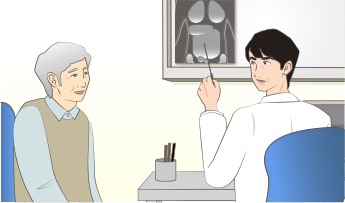

Preparation of fixtures
Handcrafted implements are prepared to prevent the patient's treatment site from moving during the therapy.
Different fixtures are made as necessary for different patient postures.
Scans exclusively for treatment planning
With the fixtures installed, CT, MRI, and other scans are conducted exclusively for the treatment planning.
As necessary, treatments are performed just before these scans. These scans may be repeated a number of times.
Preparation of instruments exclusively for the therapy
On the basis of the scan data, a treatment plan is developed, and dedicated instruments necessary for the therapy are made (compensating filters, collimators, etc.). In addition, the treatment plan is verified, and the instruments are inspected.
All these tasks require very detailed work, and therefore it often takes a number of days to start the therapy.
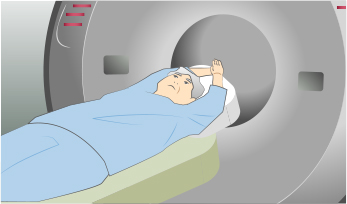


One exposure per day (a single treatment requires from a few minutes to tens of minutes))
Before the actual treatment, a rehearsal treatment may be performed. The frequency of the treatment depends on the type and condition of the cancer, and on the medical institution. Ambulatory care is usually possible; hospitalization is sometimes judged to be necessary.
The medical institution may not have sufficient facilities for hospitalization; in some cases, the patient undergoes the heavy ion radiotherapy while staying in another medical institution.
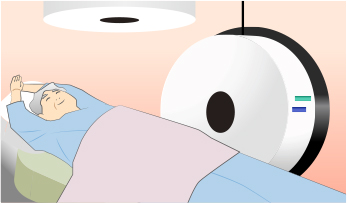

Ambulatory follow-up
After the treatment, the patient will need to go to the medical institution periodically for them to confirm changes in the lesion and check for adverse reactions.
The medical institution may request that the patient periodically go to the regular medical institution that provided the patient's introduction.
